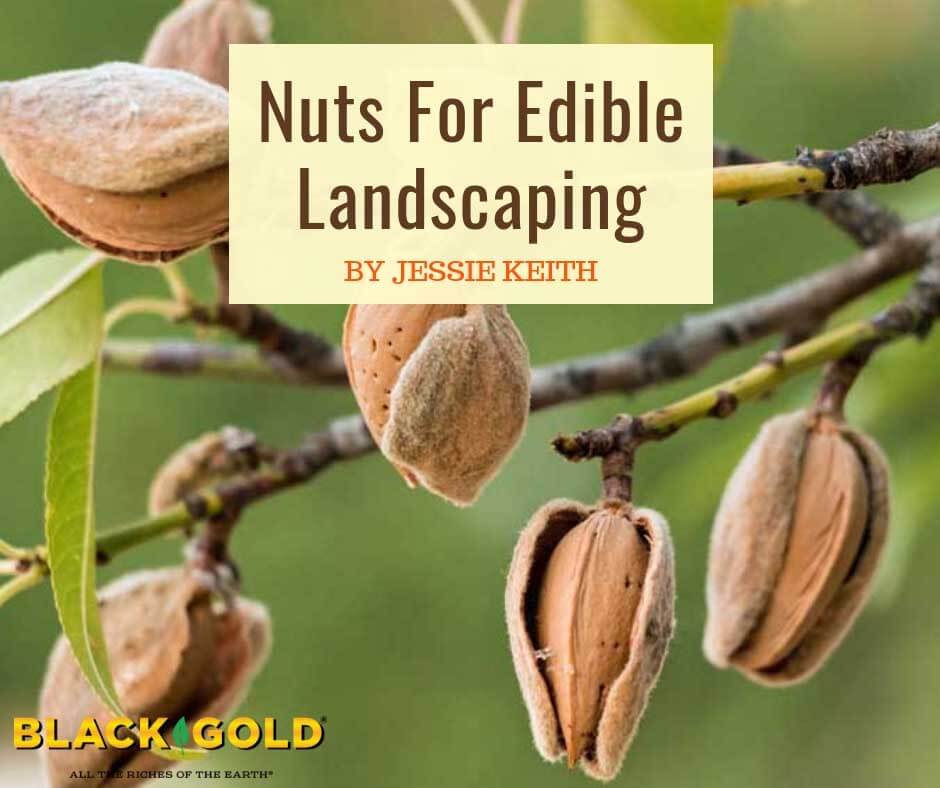
Nuts are some of nature’s most nutritious foods. They are high in fats and vitamins and provide essential forage for wildlife. Nut trees also look beautiful in home landscapes. If you are willing to gather their shelled fruits in fall and roast or toast them, then consider planting some of these fine woody plants in your yard this fall.
These trees include a mix of native American, European, and Asian nuts that homeowners might consider. So long as you choose a disease-resistant tree that’s hardy to your zone and fit for your yard, you are set. All of the selections here are non-invasive, widely adaptable, and suitable for growing across much of the country. One setback is that some of the larger trees can take several years to produce.
Almonds
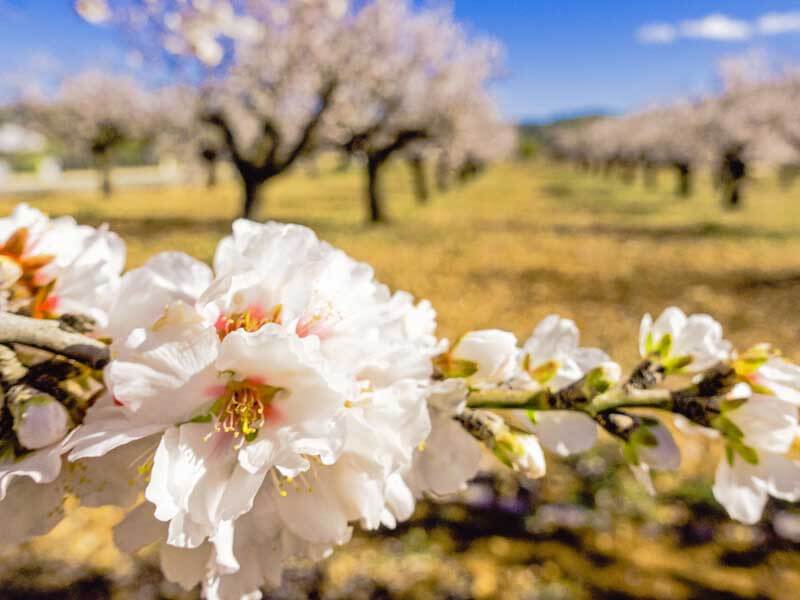
The common almond tree (Prunus dulcis) is one that can only be typically grown in warmer regions due to its USDA Hardiness Zones 7-9 limits, but some newer varieties are hardier. Almonds grow best in more Mediterranean climates but will also grow moderately well in areas with more rain, if provided full sun, an open area with good airflow, and very well-drained soil.
Almond trees are beautiful in the landscape. They are closely related to peaches and have the prettiest white or pale pink flowers that typically bloom in March. These flowers are 100% bee-pollinated and fragrant. In fall, almond fruits dry on the tree and split open when ready for harvest. They mature around October or November, so warmer, drier autumn weather is a must. For best nut production, plan on planting two to three trees for cross-pollination. Different varieties are more compatible than others for pollination, so it is essential to match trees well at planting time.
For home landscapes, choose some of the newer varieties that are compact and hardier. The hardy, later blooming Nikita’s Gift™ survives up to Zone 5, so it is a good choice for gardeners further north. The tree is compact, reaching up to 12 feet, its nuts are high quality, and they produce earlier in September. It is pollination compatible with the equally hardy, early fruiting, Oracle™, in addition to the highly productive variety, Seaside™.
Common Hazelnut
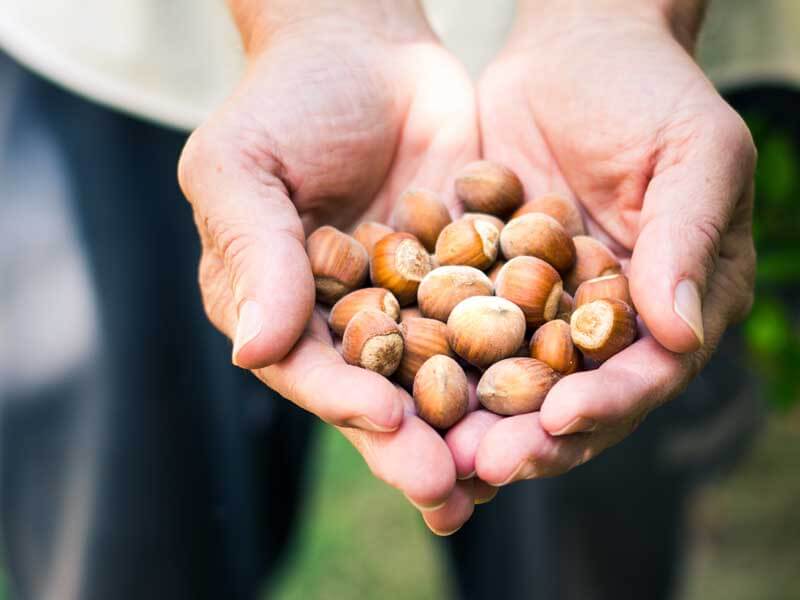
Be choosy when picking a good common hazelnut (Corylus avellana) tree. Wise gardeners only grow varieties that are completely resistant to eastern filbert blight, a potentially deadly fungal disease that can kill a susceptible hazelnut in just two years. The disease threatened the US Hazelnut industry before the Oregon State University championed a hazelnut breeding program that resulted in several top-notch, resistant hazelnuts for professional growers and homeowners alike. These are the trees that produce the high-grade nuts that you expect to find in the supermarket or quality chocolate bars. Varieties that are fast-growing and compact are also choice. Keep in mind that hazelnuts need more than one tree to produce nuts, so plan on planting at least two or three.
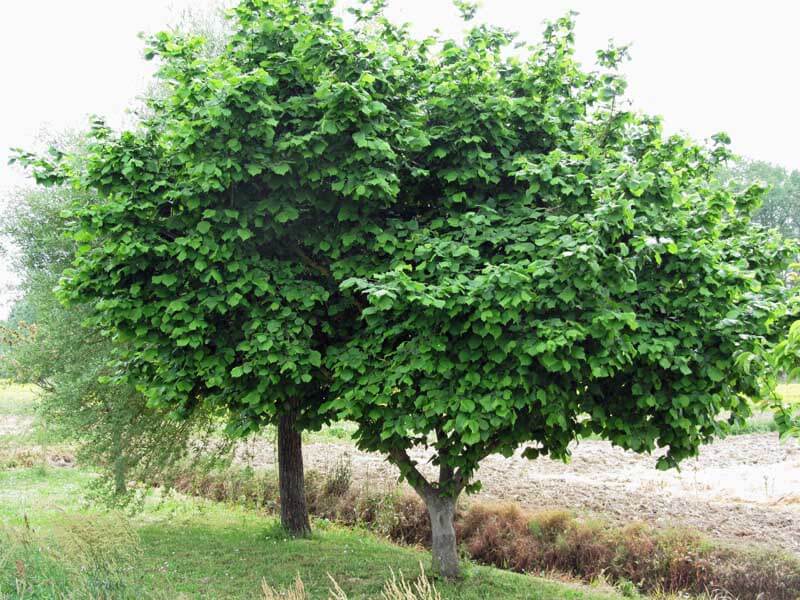
One of the best varieties is ‘Jefferson‘, a compact, hardy tree (8 to 12 feet, USDA Hardiness Zones 5-8) with a pleasing upright habit. Its nuts are very large and flavorful. For good cross-pollination and fruitset, plant this tree alongside the equally compact and disease-resistant variety ‘Theta‘, which bears medium-sized nuts with good flavor. Both of these trees start producing nuts just two to three years after planting.
Another cross-pollinator compatible with ‘Jefferson’ is the extra high yielding ‘Yamhill‘. It is also a compact tree with an attractive, broad, spreading growth habit. Its nuts are large and delicious.
Japanese Chestnut
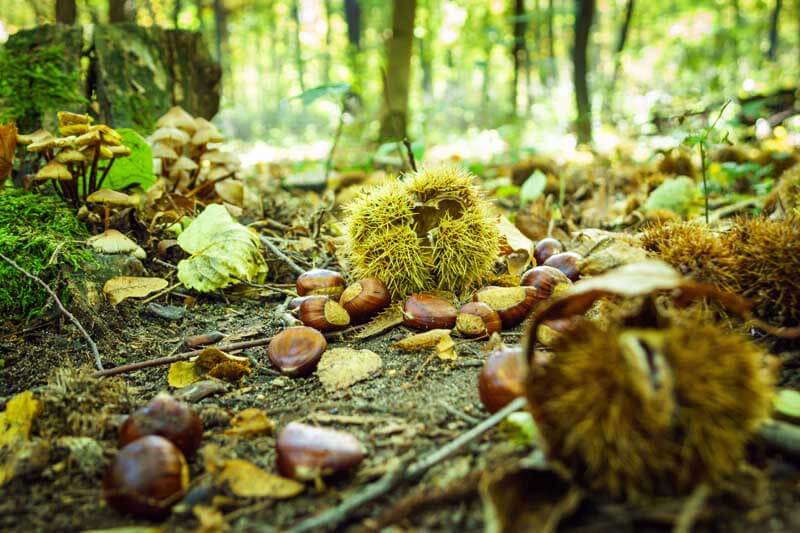
Chestnut blight is a deadly disease that attacks most chestnuts, but the Asian Japanese chestnut (Castanea crenata), is the most resistant species of them all. Its fruits are delicious and bear heavily when trees grow to maturity, so plan to harvest loads when trees mature. Otherwise, they can be a bit of a mess. The broad canopied trees can reach 40 to 60 feet and are attractive in their own right. Well-drained loamy soil and full sunshine will ensure the best overall growth.
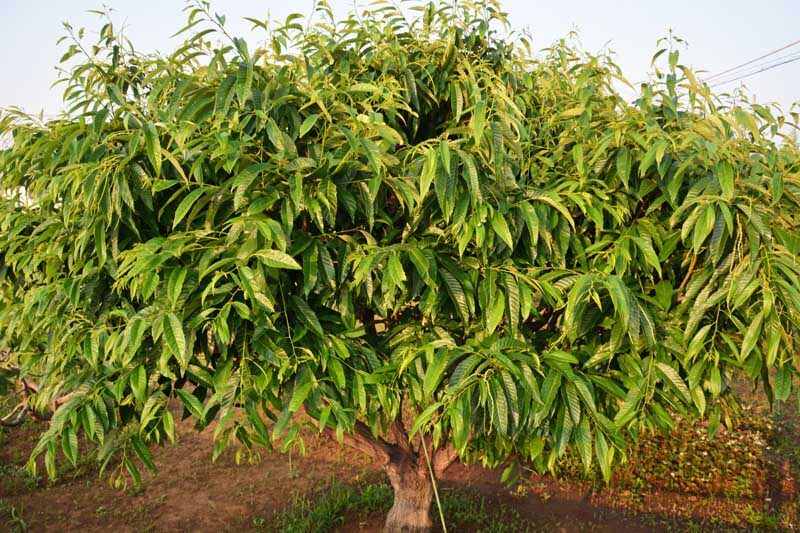
Japanese chestnuts produce showy ivory catkin flowers in spring that look a bit like clusters of fuzzy streamers. Nuts mature by fall and are held within prickly burrs that split open to bear two to three chestnuts. Unlike the other trees mentioned, these are self-fertile and don’t require another for cross-pollination.
English Walnut
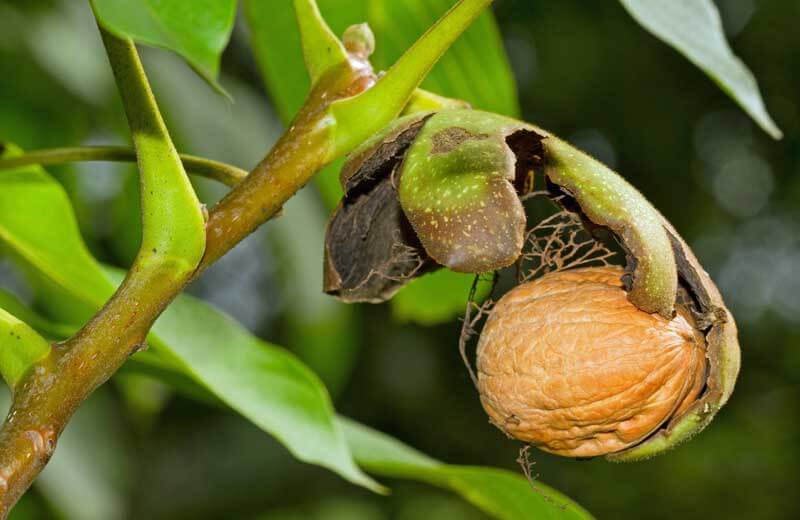
A classic nut for cooking, the English walnut (Juglans regia) is a hardy tree that will reach up to 60 feet. Despite its common name, its native range extends from Europe across to Central Asia. For happy trees, plant them in fertile, upland soils and full sun. The non-showy, wind-pollinated flowers bloom in late spring and nuts appear by late fall. They are encased by a resinous green outer shell that splits open to reveal a perfectly formed walnut. A cross-pollinating second tree is not essential but can increase nut production. Trees can take up to 20 years to bear nuts, but some varieties can take just six years before producing.
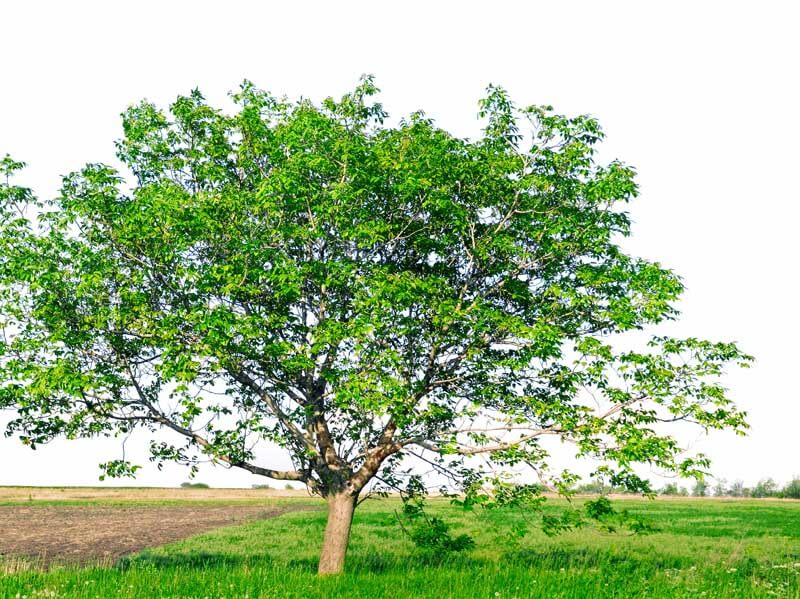
The thin-shelled ‘Carpathian’ is a Polish heirloom variety selected in the 1930s that is remarkably hardy and takes 15 years to produce from seed, so be sure to purchase a tree that’s several years old. Its nuts are ready to harvest by mid-fall — plant at least two trees for best nut production.
More compact walnut varieties are a better fit for most gardens. Stark® Champion™, is an award winner that bears loads of nuts in six to seven years after planting and has thin-shelled nuts of the highest quality that ripen in mid-fall. It is also more compact, reaching a final height of 30 to 40 feet. Plant it with the pollenizer ‘Lake English’, an even earlier-to-bear (four to five years) tree of the same height that is a little less productive.
Pecan
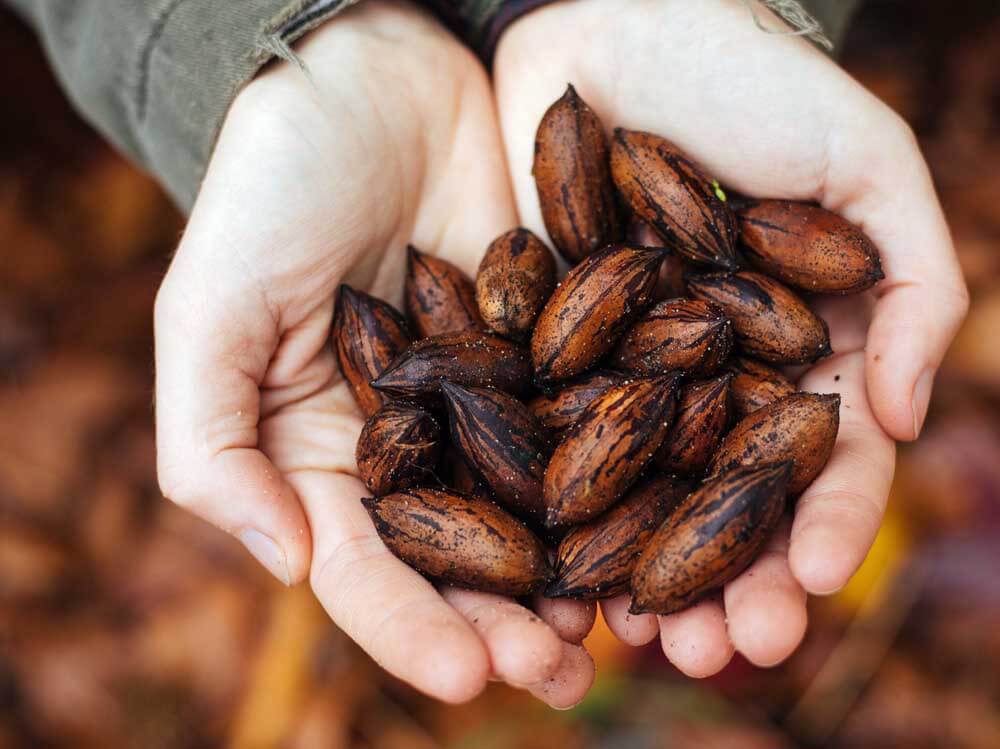
Pecans (Carya illinoinensis) are the finest native American nuts. The tall hardwood trees exist across the southeastern United States, reach 65 to 130 feet, and are hardy up to Zone 6. The elegant trees have a broad but upright canopy. Wild trees look good and have reliable nut production, but quality can be variable, so plant a good cultivated variety. Pecans have inconspicuous spring flowers. Nuts are ready to harvest by mid-fall. Pecans are self-pollinating but yield better with cross-pollination.
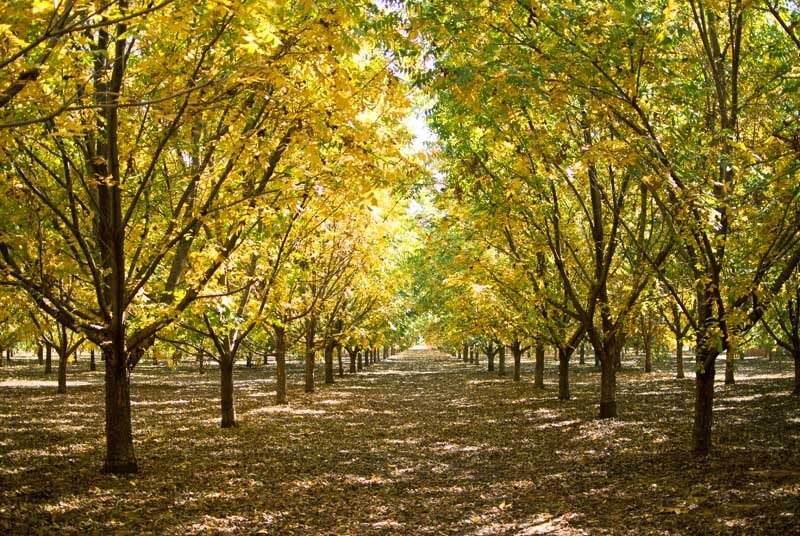
Starking® Hardy Giant™ is remarkably hardy (to Zone 5) and has extra large, thin-shelled nuts for easy cracking. The equally good producer Stark® Surecrop™ is a good cross-pollinator and an exceptionally attractive tree for landscape use.
Cultivation and Harvest
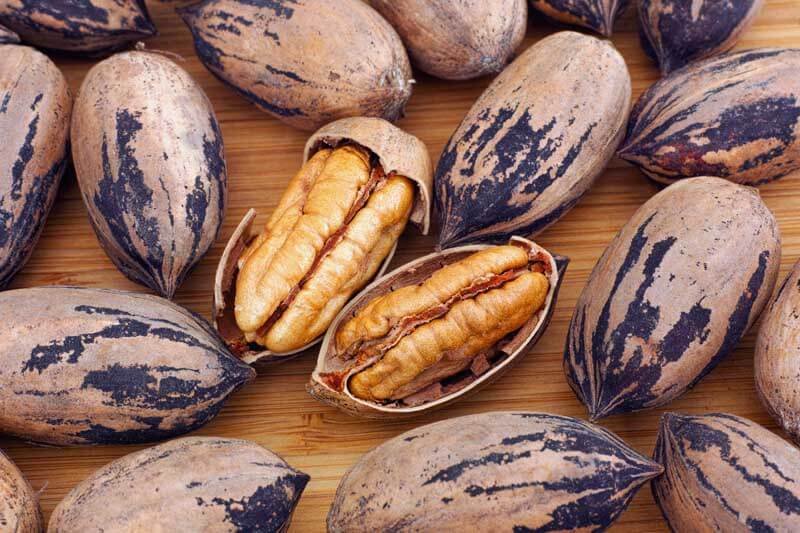
Overall, nut trees require soil to enable deep root growth and full sun for top-notch nut production. At planting time, help trees get the best possible start by amending their soil with Black Gold Garden Soil and peat moss. For a detailed tree-planting step-by-stem, read our article How and When to Plant Trees.
If you purchase a nursery-grown nut tree, it will be potted, and several feet tall, but catalog-purchased trees are typically 0.5 to 3 feet tall. So, if you want a more vigorous, faster-to-produce tree from the getgo, see if any nurseries in your area sell nut trees.
Fall harvest is very time consuming if you harvest by hand. Nut rakes or harvesters are worth the investment if your trees are highly productive. They make harvest a snap.
Shelling is also a chore, so consider getting a hand-crank sheller that will do the job more quickly. That way you can roast your nuts in quantity faster.
Nuts are nutritious and expensive, so if you enjoy them, it’s worth investing in a few of your favorite trees. These long-lived, hardwood trees will also add charm and elegance to your landscape for true edible landscaping.


